ISO/IEC 27002:2022 Explained Controls, Implementation, and Best Practices
ISO/IEC 27002:2022 turns security intent into day-to-day action. This ISO 27002 guide explains what changed in 2022, how the ninety-three controls are organized, how to implement them well, and where teams most often trip up. You’ll also get metrics to track, integrations with other frameworks, and clear next steps—without the jargon.

The TL;DR ..
ISO/IEC 27002:2022 turns information security intent into practical, day-to-day action. This guide explains what changed in the 2022 update, how the 93 controls are organised, and how to implement them effectively. It highlights common pitfalls, key metrics, and integrations with frameworks like ISO 27001, NIST CSF, and CIS Controls — helping teams move from documentation to measurable assurance.
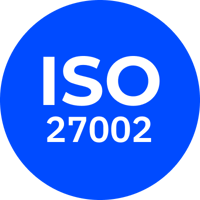
Key takeaways:
-
Understand what’s new in the 2022 refresh — including 11 modernised controls for cloud, data, and coding.
-
Learn how to group and assign ownership across organisational, people, physical, and technological themes.
-
Avoid common pitfalls with practical tips and ready-to-track performance metrics.
-
See how ISO/IEC 27002 connects with 27001, NIST CSF, and GDPR to streamline compliance and resilience.
Introduction
Why ISO/IEC 27002 matters in 2025
Threats evolve. Technology shifts. Budgets stay tight. ISO/IEC 27002 gives you a common control language that works across teams, tools, partners, and audits. It helps you design, run, and prove the controls that protect your business. In 2025, buyers and regulators expect you to show that work—27002 is the practical playbook you’ll use.
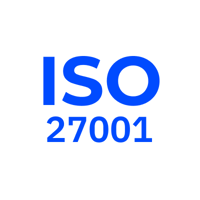
ISO 27001 vs ISO 27002 (what’s the difference?)
- ISO/IEC 27001 is certifiable. It defines how to build and govern your Information Security Management System (ISMS) and requires a Statement of Applicability (SoA).
- ISO/IEC 27002 is guidance. It explains how to select, implement, and operate the controls that support your 27001 ISMS.
ISO/IEC 27002:2022 Overview
From 2013 to 2022—why the refresh?
The 2022 update modernized the catalog, reduced overlap, and grouped controls by how you actually manage them. It also introduced controls for today’s realities (for example, cloud, threat intel, and modern monitoring practices). The result is a tighter, more usable standard.
Four themes that organize the 93 ISO 27002 controls
- Organizational: Governance, policy, supplier oversight, operations management, and business continuity fit here.
- People: Hiring, onboarding, access for joiners/movers/leavers, training, and behavior.
- Physical: Secure areas, facility access, equipment handling, and environment protection.
- Technological: Identity, access, logging, secure configuration, development, and vulnerability management.
Tip: The themes help you assign ownership. Put Organizational with GRC and business leaders, People with HR and IT, Physical with Facilities and Security, and Technological with IT/Engineering.

What’s New in ISO/IEC 27002:2022
The 2022 update to ISO/IEC 27002 reflects how modern organisations actually work. As technology, cloud adoption, and threat landscapes evolve, so too must the controls that safeguard them. This revision introduces new guidance for cloud services, secure coding, data protection, and monitoring. Bridging the gap between traditional security practice and today’s dynamic, digital environments.
Additions that reflect how we work now
The 2022 edition introduces 11 new controls to cover modern practice, from cloud and coding to data loss prevention. In brief:
- 5.7 Threat intelligence: Gather, assess, and use threat intel to inform prevention and response.
- 5.23 Information security for use of cloud services: Select, onboard, govern, and offboard cloud services securely.
- 5.30 ICT readiness for business continuity: Keep critical IT/OT services resilient during disruption.
- 7.4 Physical security monitoring: Monitor sites and sensitive areas to deter and detect physical threats.
- 8.9 Configuration management: Set baselines and manage changes across systems and software.
- 8.10 Information deletion: Delete data securely when it is no longer needed.
- 8.11 Data masking: Limit exposure of sensitive data in business processes and non-production.
- 8.12 Data leakage prevention: Detect and prevent unauthorized data movement.
- 8.16 Monitoring activities: Define and operate monitoring to detect anomalies and events.
- 8.23 Web filtering: Control access to web content to reduce malware and exfiltration risk.
- 8.28 Secure coding: Build and verify security in the software development lifecycle.
Consolidations that reduce duplication
- Identity and access lifecycle clarified: Former user-access activities are now expressed as 5.15 Access control, 5.16 Identity management, 5.17 Authentication information, and 5.18 Access rights—a cleaner joiner-mover-leaver flow with clear duties.
- Logging and monitoring simplified: 2013 logging topics consolidate into 8.15 Logging and 8.16 Monitoring activities, reducing duplicate guidance and clarifying what to monitor and how.
- Supplier oversight organized end-to-end: Topics now span 5.19–5.22 (supplier requirements, agreements, ICT supply chain, and service monitoring/change), aligning onboarding through continuous assurance.
- Four-theme model replaces 14 domains: Controls are grouped to match how teams work today (governance and risk, people, facilities, and technology).
Note: For definitive wording, consult your licensed copy of ISO/IEC 27002:2022.
Why these changes matter
- Cleaner mapping to your risk register, policies, and owners.
- Fewer gray areas for auditors and assessors.
- Better fit for cloud-first and distributed teams.
- Clearer metrics for performance and accountability.
Deep Dive into ISO 27002 Controls, Pitfalls, Tips, and Metrics
Below, each theme includes four parts:
- What good looks like
- Common mistakes
- Practical implementation tips
- Metrics to track (ready to lift into a dashboard)
Organizational Controls
What good looks like
- A risk-based control set that matches your business model and threat profile
- Policies that say what must happen; procedures that say how it happens
- Named owners for each control, with clear due dates and review cycles
- An SoA that is current, scoped, and traceable to evidence
- Supplier and third-party oversight from onboarding through exit
- Business continuity that factors people, tech, sites, and suppliers
Common mistakes
- Copy-pasting controls that don’t fit your risk
- Policies that are too broad to enforce or too narrow to scale
- An SoA that is written once and left to age
- “One-and-done” vendor due diligence without ongoing checks
- Continuity plans that miss upstream vendors or single points of failure
Practical implementation tips
- Start with your top risks and build outward. Avoid “control inflation.”
- Keep policies short and testable; link procedures to ticketed workflows.
- Track exceptions in the SoA with owners, time limits, and mitigating actions.
- Classify suppliers by risk. Apply deeper reviews to higher-risk tiers.
- Rehearse continuity plans. Time the steps. Capture lessons learned.
Metrics to track
- % of in-scope suppliers with completed due diligence this quarter
- % of controls with named owners and on-time reviews
- Mean time to close security exceptions / policy deviations
- % of business units with up-to-date business impact analyses
People Controls
What good looks like
- Background screening and role-based access before Day 1
- Joiner/mover/leaver flows with timely provisioning and revocation
- Security awareness tailored to job function and risk
- Clear reporting lines, code of conduct, and disciplinary process
- Privileged users with enhanced training and extra checks
Common mistakes
- Delayed access revocation on leavers
- Generic “check-the-box” training that doesn’t change behavior
- Privileged users treated like everyone else
- No proof of acknowledgment for key policies
Practical implementation tips
- Tie identity changes to HR events so access updates happen automatically.
- Split training into short, role-based modules; include micro-simulations.
- Add a privileged user track with secure admin, change control, and logging.
- Capture sign-offs for critical policies with versioning and audit trails.
Metrics to track
- Access revocation SLA on terminations and role changes
- Security training completion and pass rates by role
- Phishing simulation fail rate trend
- % of privileged users who completed enhanced training
Physical Controls
What good looks like
- Secure areas with layered access (badge + secondary factor, where needed)
- Visitor management with escorts, logs, and clear badges
- Camera coverage for critical zones, with retention and tamper checks
- Environmental safeguards (power, HVAC, fire detection/suppression)
- Clean desk and clear screen rules with spot checks
Common mistakes
- Shared badges or tailgating in secure areas
- CCTV without regular health checks or retention compliance
- Inconsistent asset return at offboarding
- Equipment disposal without certified data destruction
Practical implementation tips
- Audit physical access rights regularly and remove dormant access.
- Test CCTV coverage and retention quarterly; log and fix gaps.
- Barcode assets and reconcile at onboarding, moves, and exits.
- Use chain-of-custody for devices awaiting reuse or disposal.
Metrics to track
- % of secure areas audited on schedule
- Physical access review completion rate
- CCTV/log retention compliance rate vs policy
- % of incidents with complete physical evidence attached
Technological Controls
What good looks like
- Strong identity and access management with least privilege and MFA
- Secure configuration baselines enforced and drift corrected quickly
- Centralized logging with coverage for critical assets and noisy-signal tuning
- Patch and vulnerability management with risk-based SLAs
- Secure development lifecycle with code reviews, secrets hygiene, and dependency scanning
- Cloud controls mapped to shared responsibility and services in use
Common mistakes
- MFA for users, but not for admins or service accounts
- “Gold images” that drift without detection
- Alert fatigue due to un-tuned log sources
- Patch SLAs that ignore asset criticality
- Secrets in code repos and pipelines
- Assuming the cloud provider covers everything
Practical implementation tips
- Require MFA for all privileged, service, and break-glass accounts.
- Monitor configuration drift; auto-remediate where safe.
- Start logging with your most critical assets and high-value transactions.
- Set vulnerability SLAs by asset criticality and exploit likelihood.
- Add pre-commit hooks and secret scanners; rotate exposed credentials fast.
- Map cloud controls to specific services (IaaS, PaaS, SaaS) and your shared-responsibility line.
Metrics to track
- % of identities with MFA enforced
- % of systems meeting secure configuration baseline (and drift MTTR)
- % of critical assets with full log coverage and alerting
- Mean time to remediate high-severity vulnerabilities

ISO 27002 Implementation Guidance
Take a risk-based approach
Do not implement controls by copying a list. Start with business and security risk. Use your risk register to select controls that cut the biggest risk first. Note any exceptions and compensating controls in the SoA with owners and time limits.
A phased roadmap that works
- Assess:
- Scope your ISMS, assets, and data flows.
-
- Map current controls to 27002 themes; log gaps.
-
- Prioritize by risk and regulatory drivers.
- Prioritize by risk and regulatory drivers.
- Prioritize:
- Sequence work into sprints.
-
- Assign owners, due dates, and success metrics.
-
- Define evidence up front (what will “done” look like?).
- Define evidence up front (what will “done” look like?).
- Implement:
- Update policies and procedures; integrate with ticketing.
-
- Configure technical controls and instrument logging.
-
- Train people by role; test joiner/mover/leaver flows.
- Train people by role; test joiner/mover/leaver flows.
- Monitor:
- Track metrics from this guide in dashboards.
-
- Review exceptions; retest high-risk controls.
-
- Tune alerts and adjust SLAs with real data.
- Tune alerts and adjust SLAs with real data.
- Review:
- Run internal audits; close findings.
-
- Update the SoA and risk treatment plan.
-
- Feed lessons learned into the next cycle.
Tooling that accelerates the work
- Control mapping: Connect risks → controls → owners → evidence.
- Evidence management: Link tasks to artifacts; keep an audit trail.
- Continuous checks: Monitor key controls and surface drift early.
- Reporting: Generate role-specific views for leadership, auditors, and teams.

Integrating the ISO 27002 Framework with Other Frameworks
ISO/IEC 27002 and ISO/IEC 27001 together
Think of 27001 as the management system and 27002 as the control cookbook. Your Statement of Applicability connects them. Risk treatment drives which ISO 27002 controls you adopt, how you implement them, and what evidence proves they work.
Mapping to NIST CSF, CIS Controls, and GDPR
- NIST CSF: Strategy and outcomes (Identify, Protect, Detect, Respond, Recover). 27002 gives you the detailed “how.”
- CIS Controls: A prioritized set of safeguards. 27002 offers broader, governance-to-engineering coverage that helps you scale and audit.
- GDPR: 27002 controls support privacy principles (security of processing, access, logging, incident handling, supplier oversight). You still need privacy-specific design and records, but 27002 strengthens the technical and organizational backbone.
Implementing ISO 27002: Challenges and Pitfalls (and how to avoid them)
Even with the best intentions, ISO 27002 programmes often stumble in execution. The right balance of control coverage, ownership, and ongoing review determines whether your implementation drives real assurance or just adds noise. This section highlights common pitfalls, persistent myths, and field-tested practices to keep your controls effective, efficient, and relevant over time.
Over-implementation vs under-implementation
- Over-implementation: Too many controls create noise and cost. Tie every control to a risk or a requirement.
- Under-implementation: Gaps appear where risk is highest. Use data to prove coverage and performance.
Ownership and resources
Controls fail when no one owns them. Assign a named owner, define the “done,” and show the metric. Budget for run-the-business maintenance, not just the initial rollout.
Myths to retire
- “We can get certified in ISO/IEC 27002.” You certify to 27001, not 27002.
- “Once the controls are in, we’re done.” Controls drift. People change. You need monitoring and periodic review.
- “Cloud covers it.” Cloud shifts some responsibilities but not all. Map the shared responsibility line for each service.
Field-tested tips
- Put three to five metrics on every monthly security review.
- Use exceptions to keep the SoA honest and time-boxed.
- Rehearse incident and continuity plans with realistic injects.
- Treat joiner/mover/leaver as a control cluster. Fix it end-to-end.
.png?width=800&height=569&name=img-robots%20(1).png)
Future Trends: What To Prepare For Now
Technology and regulation never stand still — and neither can your controls. The next wave of ISO/IEC 27002 priorities focuses on adapting to emerging realities such as AI-driven operations, cloud-native environments, and expanding supply chain dependencies. This section explores what’s changing, why it matters, and how to prepare your control framework for the future of security and resilience.
AI-aware security and control operations
Artificial intelligence is already changing how attackers move and how defenders work. Expect more automated reconnaissance, faster phishing, and attacks that blend in better. On the defender side, expect better anomaly detection, faster triage, and assistive drafting for policies and reports.
What this means for ISO/IEC 27002
- Strengthen monitoring, logging, and anomaly detection under the Technological theme
- Tighten model and data governance under the Organizational theme
- Expand secure development controls to include model and prompt hygiene
- Keep human oversight in review and approval paths for critical changes
Practical next steps
- Document where AI is used in security operations
- Define review rules for AI-generated content and findings
- Track false positive and false negative rates to avoid drift
Metrics to watch
- % of high-risk workflows with human-in-the-loop checks
- Detection mean time to acknowledge and mean time to resolve
- AI-assisted change requests with reviewer sign-off logged
Cloud-native, containers, and serverless at scale
More workloads live in cloud services and ephemeral compute. Shared responsibility lines are different for each service.
What this means for ISO/IEC 27002
- Strengthen identity, least privilege, and network segmentation
- Treat configuration baselines as code with drift detection
- Align logging with cloud service specifics and data residency needs
Practical next steps
- Map shared responsibility for each major service in use
- Enforce multi-factor authentication for all privileged identities
- Add preventive and detective guardrails in code pipelines
Metrics to watch
- % of cloud resources covered by baseline checks
- % of privileged identities with MFA and just-in-time access
- Configuration drift mean time to remediate
IoT, OT, and edge security
Non-traditional devices are part of the attack surface. Many lack strong patching or logging options.
What this means for ISO/IEC 27002
- Classify devices and segment by risk
- Control physical access and device lifecycle tightly
- Capture available logs and monitor behavior at the network layer
Practical next steps
- Maintain an up-to-date asset inventory for IoT and OT
- Use gateways or proxies to enforce policy where devices cannot
- Plan isolation playbooks for suspected compromise
Metrics to watch
- % of IoT/OT assets with known owner and risk tier
- % of segmented networks with enforced east–west controls
- Time to isolate a risky device
Supply chain and SaaS concentration risk
Your security depends on your vendors and the vendors of your vendors. Concentration risk is now a board topic.
What this means for ISO/IEC 27002
- Expand supplier risk tiers and continuous assurance
- Include exit and substitution plans for critical services
- Track upstream incident response quality
Practical next steps
- Identify your most critical suppliers and their key sub-processors
- Set evidence and notification expectations in agreements
- Test your ability to operate in a degraded vendor scenario
Metrics to watch
- % of tier one suppliers with current due diligence
- % of tier one suppliers with tested incident notification paths
- Time to switch to an alternate provider in tabletop exercises
Cryptography changes and quantum readiness
Crypto-agility matters. You need to know where and how you use cryptography so you can migrate when needed.
What this means for ISO/IEC 27002
- Maintain a clear cryptographic inventory and key management practice
- Plan for algorithm and protocol upgrades
- Control secrets across code, pipelines, and devices
Practical next steps
- Inventory cryptographic libraries and protocols in use
- Define a deprecation plan for weak algorithms
- Add secret scanning and rotation to your SDLC
Metrics to watch
- % of systems using approved algorithms and protocols
- Secret exposure mean time to rotate
- Completion rate of crypto inventory per quarter
Privacy by design and data minimization at scale
Data volume and regulation both grow. You need tighter alignment between security and privacy outcomes.
What this means for ISO/IEC 27002
- Link access, logging, and retention to privacy requirements
- Tie data classification to control strength
- Include privacy risk in supplier scoring
Practical next steps
- Map data categories to retention and disposal rules
- Automate deletion in systems that support it
- Include privacy findings in monthly security reviews
Metrics to watch
- % of systems with automated retention enforcement
- % of access reviews that include sensitive data owners
- Age distribution of stored personal data vs policy
Frequently Asked Questions
Can you get certified in ISO/IEC 27002?
No. You certify against ISO/IEC 27001. ISO/IEC 27002 is guidance that helps you select and operate the right controls to support your 27001 Information Security Management System.
How do ISO/IEC 27001 and ISO/IEC 27002 work together?
27001 defines what an ISMS must include and how it is governed. 27002 explains how to implement and run the controls that support your ISMS. Your Statement of Applicability ties them together.
How do I know which ISO 27002 controls to adopt?
Start with risk. Use your risk register and legal or contractual obligations to choose controls. Record inclusions, exclusions, and compensating controls in the SoA with owners and time limits.
What are the benefits of using ISO/IEC 27002?
A common control language across teams and vendors, faster audits, clearer evidence, and stronger alignment with business risk. It also makes it easier to map into other frameworks you may need.
How do ISO 27002 controls map to NIST CSF, CIS Controls, or GDPR?
Use 27002 to implement the technical and organizational controls that support NIST CSF outcomes, CIS safeguards, and GDPR security of processing. A crosswalk helps you avoid duplicate effort.
What are the biggest pitfalls to avoid?
Over-implementing controls you do not need, leaving controls without owners, assuming cloud covers everything, and failing to keep the SoA current.
Conclusion and Next Steps
ISO/IEC 27002 turns intent into action. It gives you practical guidance to design, operate, and prove the controls that protect your business. Use it with a risk lens. Assign clear owners. Measure performance. Review often. When you do that, your audits run smoother, your incidents are rarer and smaller, and your partners trust you more
What to do this quarter:
Refresh your SoA with a hard look at risk and ownership.
Pick five controls to instrument with clear, reliable metrics.
Rehearse one incident and one continuity scenario end to end.
Tighten identity lifecycle and privileged access end to end.
.png)

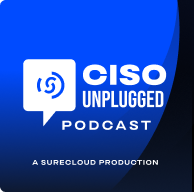



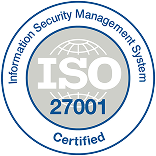
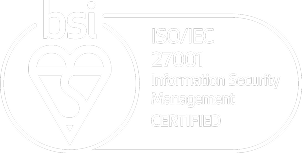

_HighPerformer_Enterprise_HighPerformer.png)
